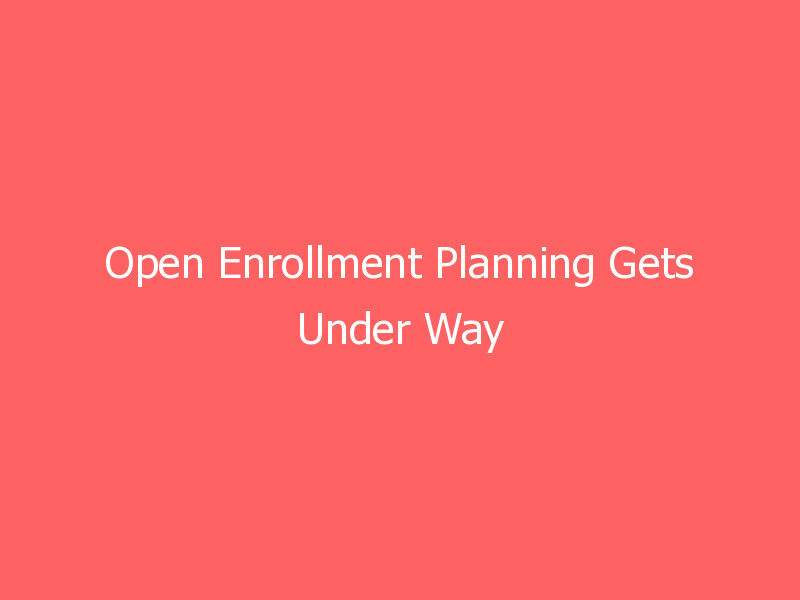Last year, open enrollment for 2021 employee benefits presented a first-of-its-kind situation, with much of the workforce working remotely. The 2022 benefits open enrollment period, which most companies will hold sometime between late November and early December, presents fresh demands as employers adjust to a mix of onsite and remote workers.
Employees’ priorities have also changed during the pandemic, and they may be seeking enhanced offerings to protect their health and well-being, or better guidance on how to use current benefits.
Open enrollment is an opportunity to showcase the benefits package and the values the organization provides to employees—and to help stem
rising turnover rates. If current offerings aren’t competitive, however, then this is the time to think about revising the benefits menu.
A Changed World
“The world we knew—the way we work, live and consume information—will never be the same,” said Deena Harvanek, U.S. communications solutions leader at HR consultancy Mercer. “Take this opportunity to rethink your approach to open enrollment.”
“Employees are more concerned about their physical health, stress levels and financial well-being,” noted James Bernstein, U.S. health and benefits midmarket leader at Mercer. “Employees want a fresh start,” so it is critical that employers strive to attract and keep workers, he noted. “Build an experience and culture that people want to be part of.”
Benefits that are receiving more attention this year, Harvanek and Bernstien said, include mental health support, remote-work flexibility, long-term disability protection, supplemental child support and elder care support. They have also seen increased employee interest in having a wide array of voluntary benefits that workers can select, even if they have to pay premiums for them fully or partially, such as pet insurance, legal services and ID-theft protection.
Telemedicine use surged at the start of the pandemic, Bernstein said, including mental health teletherapy. “Going forward, employees anticipate a greater role for virtual care,” he said. In addition, “employers say they want to add more financial wellness resources because financial security is a top priority for employees.”
Doug Ramsthel, executive vice president and a partner at Burnham Benefits, a brokerage and advisory firm, said employers recognize “greater needs to support childcare, and are likely to see an increase in spouse enrollment, as labor statistics indicate more spouses have elected to stay at home instead of work and will need coverage now, through the working spouse.”
[Want to learn more about employee benefits? Join us at the
SHRM Annual Conference & Expo 2021, taking place Sept. 9-12 in Las Vegas and virtually.]
Virtual Fairs and Apps
According to Ramsthel, “last year’s best practices for open enrollment will be continued into the 2022 open enrollment season, including virtual health fairs, virtual open enrollment meetings, and shorter, more frequent, and targeted communications.”
Virtual benefit fairs, where employees and families visit online vendor “booths” to learn about their benefits and access resources, “had been around for years but employees didn’t feel a compelling need to use them before the pandemic,” Harvanek said. “Once we did use them, there’s no going back,” she believes, especially with a hybrid workplace with more permanently remote workers.
Employers also are more likely to offer enrollment through mobile-phone platforms, Bernstein said, which can appeal to both tech-savvy and deskless workers.
“Lean on vendors to enhance the open enrollment experience” using consumer-like technologies, Bernstein advised.
Setting a Schedule
Harvanek and Bernstein suggested the following open enrollment planning schedule:
June-September:
Make a plan and develop a strategy.
Set goals and measures for outreach, use of digital resources and enrollment.Conduct employee listening sessions.Determine your media plan, develop key messages and identify all audiences, making content personal, simple and direct.
September-October:
Get the word out.
Distribute a pre-enrollment flyer (printed and online).Hold virtual benefits fair.Distribute enrollment packet (printed and online).
November-December
Ready, set, go.
Launch enrollment through a benefits portal, for a period of about three weeks.
“The world we knew will never be the same,” Harvanek said. “The time is now to rethink your approach to open enrollment.”
FSAs Reverting Back to ‘Regular’ Rules
Gallagher, a benefits broker and consultancy, recently posted
action items for open enrollment. One of them is to inform employees that traditional rules for flexible spending accounts (FSAs) will be back in effect for the 2022 plan year.
COVID-19 relief legislation and related IRS rules had allowed greater use of FSAs for plan years 2020 and 2021. Absent new extensions, pre-pandemic restrictions will again be in place for 2022 for health care FSAs:
Midyear changes will again be restricted to employees with a “change in status” life event, such as marriage, divorce or birth of a child. The IRS liberalized FSA rules to permit midyear election changes for calendar year 2020 and plan years that end in 2021 without requiring a status-changing event.
Health FSA grace periods, when employers offer them, will return to two-and-a-half months (through March 15 of the following year). COVID-19 relief had extended grace periods to 12 months for 2020 and 2021 plan years, allowing health FSA holders extra time to incur and pay expenses using account funds through the next year.
Health FSAs won’t permit unlimited carryover of unused amounts, as was allowed for the 2020 and 2021 plan years. Employers will again have the option of permitting FSA holders to carry over account balances of up to $500 into the new year, or to offer the two-and-a-half-month grace period, or neither, but not both.
Relief provisions are also ending for dependent care FSAs (DC-FSAs), also known as dependent care assistance plans (DCAPs):
DC-FSAs won’t include a carryover provision. Employers could allow DC-FSA funds to carry over unused balances for 2020 and 2021 plan years only.
The amount of tax-excludable DC-FSA contributions will revert to $5,000 (or $2,500 for married individuals filing separately), subject to certain earned income restrictions. For 2021, pandemic-relief legislation had increased that limit to $10,500 (or $5,250 for married individuals filing separately).
No more DC-FSA claims for dependent children who “aged out” after turning 13 years old. IRS rules had temporarily increase in the maximum DC-FSA age for children from 13 to 14 for the 2021 plan year, for account funds unspent at the end of the 2020 plan year.
Employers who adopted any of these changes “may want to use annual enrollment to re-communicate to employees the ‘regular’ rules that will resume next year,” Gallagher advised.
[July 21 SHRM webcast: Preparing for This Year’s Open Enrollment and Critical Benefits Communications]
[July 22 SHRM webcast: The Future of Open Enrollment]
Originally found on SHRM Read More







